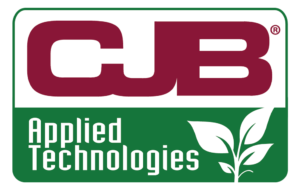Scott Witte, Ph.D., senior scientist, and Andre Weltman Tatar, general manager, of Salvus, LLC, presented the poster “A Novel Polymer-Based PFAS Sensing Technology” with the team from Allonnia during the Battelle Chlorinated Conference in Denver. The poster reflects the work of Salvus, Allonnia, and Georgia Tech in developing a polymer-based PFAS sensing system that uses the Salvus interferometry detection platform.
“We appreciate Allonnia securing this joint poster session where we could share the progress we’ve made in approaching a commercial-ready platform to quickly detect PFAS compounds at low concentrations in the field,” Dr. Witte remarked. “This was a great opportunity to connect with leaders involved in characterizing, monitoring, remediating, and managing water sources. We also were able to share our latest white paper detailing how our Salvus Detection Platform rapidly detects PFOA.”
In April 2024, the United States Environmental Protection Agency (US EPA) released a final rule setting limits on certain per- and polyfluoroalkyl substances (PFAS) compounds in U.S. drinking water. The most restrictive limits were set for perfluorooctanoic acid (PFOA) and perfluorooctane sulfonic acid (PFOS) at 4 parts per trillion (ppt).
During the poster session, the team shared research that showed the Salvus Detection Platform can detect concentrations of PFOA to 100 parts per billion (ppb) quantitatively within 10 minutes and detecting to 10 ppb qualitatively. Salvus is currently vetting two paths to achieve detection in the parts-per-trillion range. In addition, testing of both short-chain and long-chain PFAS compounds showed overlapping detection, indicating the polymer-based coating does not discriminate based on PFAS carbon chain length and therefore has the potential to function as a total PFAS sensor.
“As Salvus approaches commercial-ready at the end of the year, we are seeking partner companies to bring our technology to market and enable more timely PFAS management and remediation decisions,” Tatar said.
Learn more about Salvus and its detection technology.






